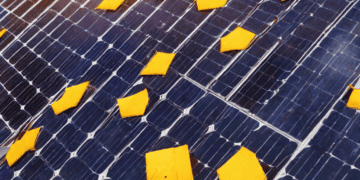Recently, President Trump announced tariffs on solar panels and components, marking a significant trade policy shift. These tariffs, starting at 30 percent and decreasing to 15 percent over four years before expiring, are aimed at boosting U.S. manufacturing and enforcing a stance of trade protectionism under the banner of ‘America First’.
Contrary to traditional regulatory capture, where industrial interests sway policy decisions, this move appears more aligned with an ideological commitment. However, despite this attempt to bolster domestic manufacturing, these tariffs are unlikely to provide substantial benefits across various sectors of the economy.
Examining the Effects
- Impact on Domestic Manufacturing: While the tariffs aim to level the playing field with Asian manufacturers, particularly those in China, they may not revitalize the U.S. solar industry effectively. Past tariff implementations came too late, failing to prevent a significant decline in U.S. manufacturers’ global market share. Chinese manufacturers gained a competitive edge, significantly reducing the cost of solar by 80 percent since 2010.
The recent tariffs, influenced by Suniva and Solarworld’s petition, aim to block cheaper Southeast Asian imports but might offer only minimal incentive for new domestic manufacturing investments. Any progress may be short-lived, considering the tariff reduction over four years and the eventual expiration.
- Impact on Solar Technology Innovation: The tariffs might hinder innovation by failing to protect emerging solar technologies. Firms focusing on groundbreaking solar innovations face challenges in scaling up due to their vulnerability in the global market. Certainty over premium pricing, crucial for investment, diminishes with the four-year tariff phase-down.
- Impact on Domestic Deployment of Solar Power: With increased costs due to tariffs, the pace of solar deployment in the U.S. might slow, leading to an estimated 8-15 percent reduction compared to a scenario without tariffs. Consequently, jobs in solar deployment may suffer a setback, overshadowing potential gains in manufacturing.
- Impact on Trade Relations: Previous experiences with tariffs on solar imports from China led to retaliatory actions. Anticipate similar responses from countries affected by these recent tariffs, possibly escalating into international disputes. The legal justification for the tariffs remains uncertain and might not withstand international scrutiny.
In summary, while these tariffs might fulfill ideological promises, their overall impact appears limited. They may offer marginal support to U.S. manufacturing without adequately stimulating job creation or significantly revitalizing the industry. Moreover, hindering innovation and potentially straining trade relations might outweigh the short-term gains.
Looking Forward This decision-making process highlights the administration’s predictable adherence to ideological promises despite industry opposition and economic concerns. Analysts and advocates may need to recalibrate strategies to influence policy outcomes positively.
In conclusion, while the recent tariffs on solar products attempt to prioritize U.S. interests in trade, their effectiveness in achieving sustainable growth or substantial benefits remains uncertain.
Stay current with supply chain report news at The Supply Chain Report. For international trade resources, visit ADAMftd.com.
#TrumpTariffs #SolarPanelTariffs #TradeProtectionism #AmericaFirst #USManufacturing #SolarIndustry #DomesticManufacturing #SolarTechnology #InnovationChallenges #SolarDeployment #SolarPower #TariffImpact #USTradePolicy #ChinaTradeRelations #SolarJobMarket #TradeDisputes #GlobalMarketShift #SolarMarket #SolarManufacturing #SolarTech #TariffEffects #USSolarIndustry #SolarInnovation #USSolarDeployment

















